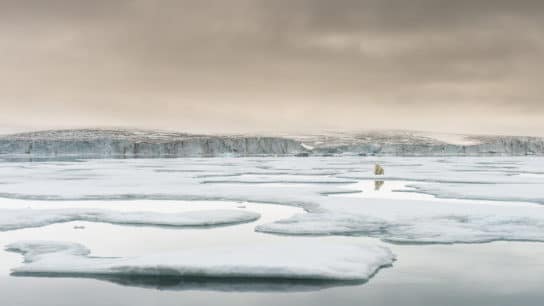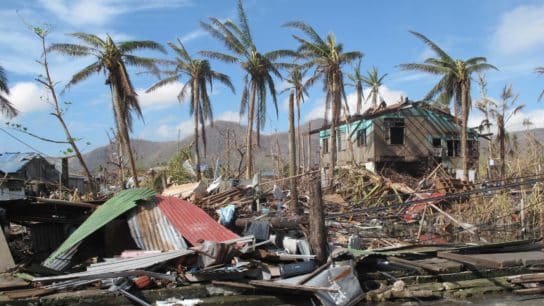An exceptionally dry winter and fierce winds have created the perfect conditions for the fires to spread across Los Angeles, destroying hundreds of buildings and forcing tens of thousands to evacuate.
—
Fast-spreading, out-of-control wildfires have prompted widespread evacuations in the Los Angeles region, shocking the nation as footage captures homes ablaze and vast swaths of vegetation consumed by the relentless fires.
At least five people have been killed as the Eaton fire continues to burn through Pasadena and the areas near the Angeles National Forest. The fire had spread across more than 10,000 acres as of Wednesday evening and was on track to become California’s largest fire in four decades to burn in January.
Another fire raging in the western Pacific Palisades, the largest of all blazes at the time of writing, has grown to 15,800 acres. Preliminary estimates of damages and economic losses from the fire exceeded $50 billion, making the Palisades fire the most destructive in the modern history of the city.
A smaller fire in the northern LA suburb of Sylmar had “rapidly expanded” to 850 acres Wednesday evening, prompting the evacuation of more than 3,000 residents.

All three blazes had 0% containment as of Wednesday evening, according to the California Department of Forestry and Fire Protection.
Another wildfire broke out in the Acton area, near Santa Clarita, in the late hours of Wednesday, growing to 348 acres with an increase to 40% containment.
More than 70,000 people across several LA neighbourhoods have been evacuated and some 1,100 buildings have been incinerated, with more than 28,000 structures under threat.
‘Historic’
California’s governor Gavin Newsom talked about an “unprecedented” situation as he proclaimed a state of emergency and deployed more than 1,400 firefighting personnel across the city.
Earlier Tuesday, Newsom announced that California had secured a Fire Management Assistance Grant (FMAG) from the Federal Emergency Management Agency (FEMA) to suppress the fires in Pacific Palisades.
The National Weather Service (NSW) issued red flag warnings extending from central California’s coast to the US-Mexico border.
Jim McDonnell, the chief of the Los Angeles Police Department, described the situation as “a tragic time” for the city. “It’s critical that we be patient, come together and stay focused on saving lives,” he said.
Winds and Drought
A combination of several factors have allowed the fires to grow and spread rapidly.
Powerful Santa Ana winds, with speeds reaching up to 80mph and even 100mph in certain areas, have fanned the flames at an unprecedented pace, leading to “one of the most significant fire outbreaks in history,” according to meteorologist Ariel Cohen.
These dry, warm winds originate from the western desert interior of the United States and push towards southern California, creating ideal conditions for wildfires by reducing humidity and drying out vegetation. These winds have fuelled some of Los Angeles worst wildfires in the past.

Adding to that was an abundance of dry, fire-prone vegetation in the area.
Southern California has experienced “exceptionally dry” conditions following two winters of heavy rainfall in 2022 and 2023.
“You’d have to go to the late 1800s to see this dry of a start to the rainy season,” Glen MacDonald, a geography professor at the University of California, Los Angeles (UCLA), told The Atlantic.
Furthermore, the impact of the climate crisis cannot be overlooked. Rising global temperatures, driven by the burning of fossil fuels, have contributed to an increase in “fire weather” days by drying out vegetation and soils and lowering humidity levels.
Researchers have linked the climate emergency to a 172% increase in burned areas in California since the 1970s, with projections indicating a continued spread of wildfires in the years to come.
According to MacDonald, the concept of fire season no longer applies to Southern California. “You can have a fire any month of the year,” he told The Atlantic.

Wildfire scientist Maria Lucia Ferreira Barbosa, at the UK Centre for Ecology & Hydrology, said that while it was too early to attribute the Los Angeles fires to climate change, “research has shown that global warming brings more prolonged dry conditions that exacerbate the spread of wildfires.”
Globally, extreme fires are set to increase by up to 14% by the decade’s end, 30% by mid-century, and 50% by 2100, according to the UN Environment Programme.
Featured image: CAL FIRE_Official/Flickr.
This story is funded by readers like you
Our non-profit newsroom provides climate coverage free of charge and advertising. Your one-off or monthly donations play a crucial role in supporting our operations, expanding our reach, and maintaining our editorial independence.
About EO | Mission Statement | Impact & Reach | Write for us














